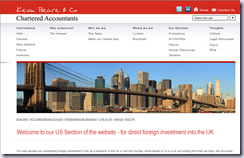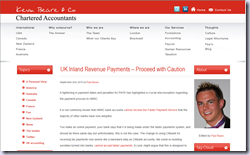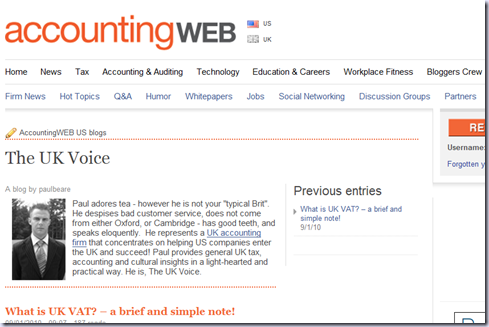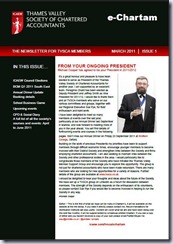 After several months discussing with the various parties involved the first issue of e-Chartam hit the Thames Valley District Society part of icaew.com.
After several months discussing with the various parties involved the first issue of e-Chartam hit the Thames Valley District Society part of icaew.com.
Various District Societies (DS) publish similar newsletters and some are printed and posted and some are available for download on their own areas of icaew.com/regions. The Thames Valley also have a printed magazine that will next hit your post boxes in early May.
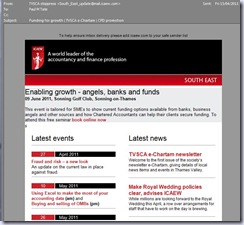 The common factor is that all the societies have trouble providing news to all their members. The newsletter was announced in Stoppress as one of the few methods the DS has of telling members it exists. The opening rate on this sign posting news email that started as something akin to e-Chartam is now very low with a subsequent issue on click throughs to the articles. I believe the Institute’s web experts advise that the size and format of Stoppress is the optimum for reader’s opening it.
The common factor is that all the societies have trouble providing news to all their members. The newsletter was announced in Stoppress as one of the few methods the DS has of telling members it exists. The opening rate on this sign posting news email that started as something akin to e-Chartam is now very low with a subsequent issue on click throughs to the articles. I believe the Institute’s web experts advise that the size and format of Stoppress is the optimum for reader’s opening it.
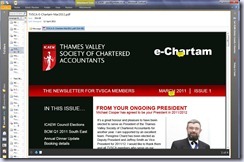 The Institute has issues with being able to email small PDF’s to their members. The belief is that many members will be unhappy if they received the full PDF in their inbox. In the past I believe this was the case but with the advent of reasonable broadband and the fact that Outlook will now allow you to review a PDF in the preview window I find I am receiving more and more optimised PDF’s in my inbox. The big ones (multi-megabytes) are still links on web sites. I would be interested in your views.
The Institute has issues with being able to email small PDF’s to their members. The belief is that many members will be unhappy if they received the full PDF in their inbox. In the past I believe this was the case but with the advent of reasonable broadband and the fact that Outlook will now allow you to review a PDF in the preview window I find I am receiving more and more optimised PDF’s in my inbox. The big ones (multi-megabytes) are still links on web sites. I would be interested in your views.
Equally with the advent of the Members Preference Centre I believe the old issue of too much “spam” email from the Institute is now over, perhaps you are still on old affiliate marketing mailing lists but these are easily dealt with as no one wants to upset possible customers and the unsubscribe button will usually work.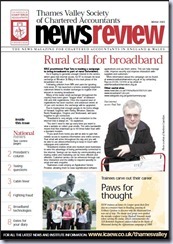
Readers and friends will know I have been involved in Institute communications to District Society members for some time and since the demise of the centrally funded printed newsletter (News Review) I have felt that members deserve more information on what is happening locally and would welcome your views as to how you like to receive that information.

